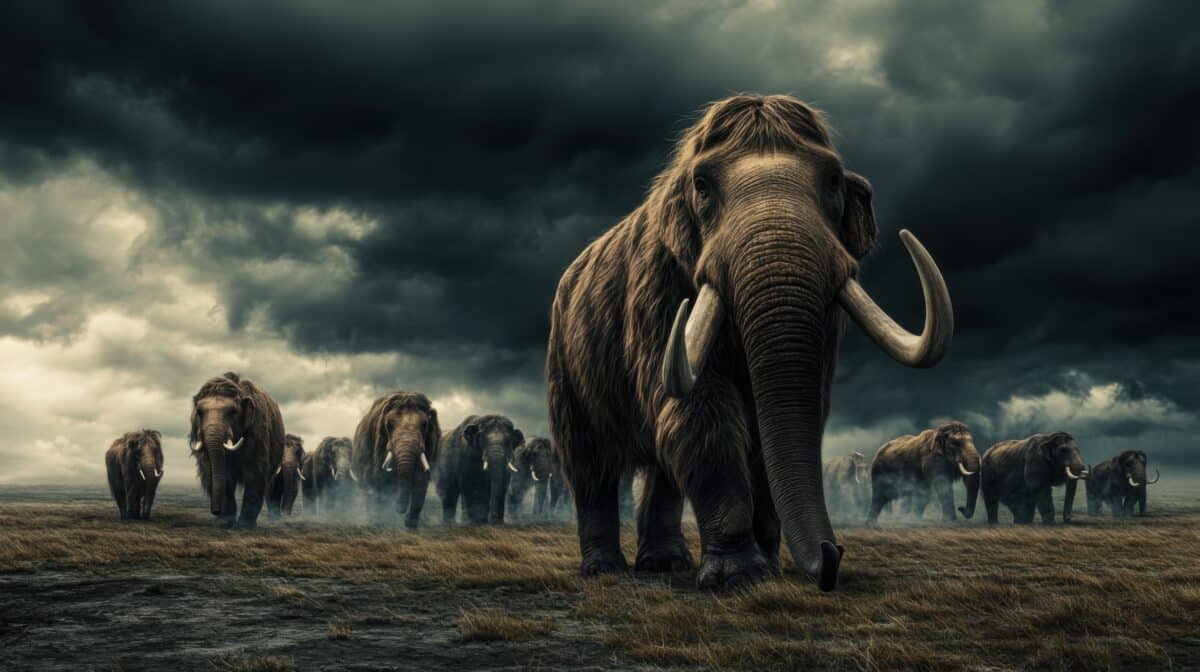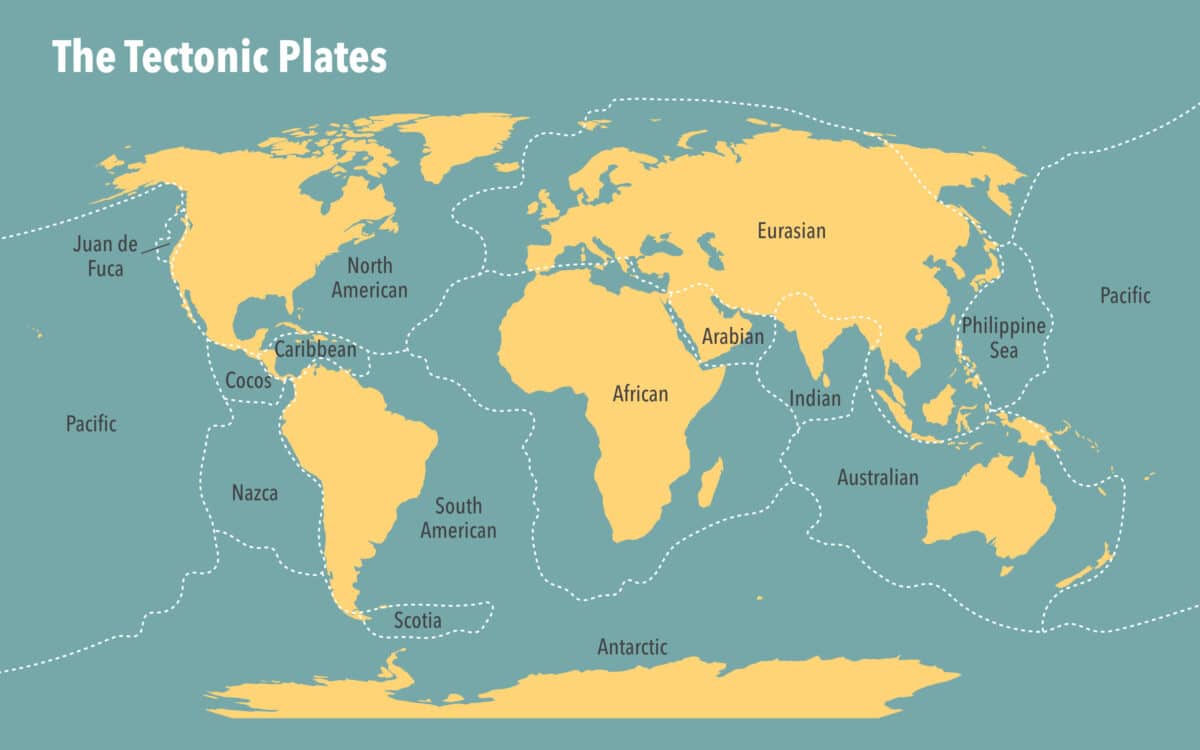
(© dominic - stock.adobe.com)
In a nutshell
- A massive hot rock plume from Earth’s mantle helped create a land bridge between Africa and Asia 20 million years ago, ending Africa’s 75-million-year isolation
- This land connection allowed mammals including elephant ancestors to migrate between continents and played a crucial role in human evolution by enabling primate movement
- The same geological event transformed Earth’s climate by altering ocean circulation, making North Africa drier (helping form the Sahara Desert) while increasing monsoon rainfall in South Asia
AUSTIN, Texas — Two continents collided millions of years ago, forming a bridge that changed Earth’s climate system and triggered one of history’s greatest animal migrations. Recent research reveals how the closure of an ancient ocean passageway reshaped our planet in ways we still experience today.
The study, published in Nature Reviews Earth & Environment, examines what happened when the Arabian and Eurasian plates crashed together, closing the Tethys Seaway – an ocean corridor that once divided Africa and Eurasia. This continental collision around 20 million years ago created a land connection that altered Earth’s future trajectory.
“This collision was governed by plate tectonics and mantle convection and had profound impacts on ocean circulation, biogeography and the climate system beyond the Eastern Mediterranean-Tethyan realm,” explains the research team, led by Eivind O. Straume during his time as a postdoctoral fellow at the University of Texas at Austin.

The remarkable discovery centers on the role of Earth’s deep interior. While scientists knew moving continents drove this collision, this study highlights how hot rock from near Earth’s core – called the Afar plume – pushed up land and helped close the seaway.
This molten material didn’t just raise the Ethiopian highlands. It formed a flowing belt of rock that traveled northward beneath Earth’s crust, lifting the Arabian peninsula and helping build the land connection between Africa and Eurasia.
“The shallow seaway closed several million years before it otherwise likely would have due to these specific processes — mantle convection and corresponding changes in dynamic topography,” said Straume, who now works for Norway’s NORCE research center. “Without the plume, you could argue that the continental collision would have been different.”
Wildlife Migration Transforms Ecosystems
For millions of years, Africa existed as an isolated continent with unique animals evolving without outside influences. When the land bridge – named after Gomphotherium, an elephant-like creature that crossed it – formed around 20 million years ago, it began what scientists call the Great Old World Biotic Interchange.
African mammals, including elephant ancestors, moved into Eurasia, while Eurasian species expanded south into Africa. This exchange transformed ecosystems across both continents. Monkey-like primates had previously moved from Asia to Africa during an earlier period, and their African descendants later returned to Asia during this migration event.
In this case, timing is everything. If the land bridge had formed a million years later, the animals that migrated between continents could have been on different evolutionary paths. That includes human ancestors.
“It’s an example of how the long-term convective evolution of the planet talks to the evolution of life,” Straume said.

Ocean Currents and Climate Transformation
The research team, with scientists from six countries, used computer models to reconstruct how the changing landscape affected ocean circulation and climate.
Before the seaway closed, warm surface waters flowed from the Indo-Pacific into the Atlantic, while deep, salty water moved the opposite way. The closure strengthened the Atlantic Meridional Overturning Circulation – the ocean conveyor belt that moves warm water northward in the Atlantic and returns cold water southward at depth. This circulation pattern remains fundamental to our current climate system.
“The closure of the Neotethys was a necessary domino to fall for the transition from a global circulation mode dominated by Southern Ocean Deep Water to one dominated by North Atlantic Deep Water,” the researchers note.
The closure created contrasting regional effects on land. North Africa became drier as Atlantic moisture was blocked, potentially contributing to the Sahara Desert’s formation. Meanwhile, South Asia grew wetter as the newly raised land enhanced monsoon patterns.
This uplift of the Arabian Peninsula had significant impacts on ocean circulation and Earth’s climate. Nearby ocean temperatures warmed, which widened seasonal temperature ranges and made areas from North Africa to Central Asia more arid. Researchers believe this land bridge was a final trigger in making the Sahara a desert, while these topographical changes enhanced monsoon seasons in Asia, making Southeast Asia wetter.
Understanding this ancient event provides context for today’s climate challenges. The gradual cooling trend initiated by these changes over millions of years has rapidly reversed due to human-caused warming – occurring at a pace far exceeding any natural climate shift in Earth’s recent history.
By showing how processes deep within Earth transformed climate and wildlife, this research reveals the intricate connections between Earth’s different systems – from the hot interior to ocean currents to animal migrations – and demonstrates how dramatically our planet can change even without human intervention.
Paper Summary
Methodology
The researchers combined geological evidence, climate data, and computer modeling to reconstruct the Eastern Mediterranean region’s tectonic evolution and its global effects. They used mantle circulation models solving physics equations to predict forces and movements for different plate arrangements. These models drew on multiple data sources, including plate movements, heat transfer patterns, and seismic measurements. The team also employed backwards mantle modeling to recreate internal Earth structure for recent geological periods, helping them model land height changes through time. They assembled extensive volcanic records, tectonic information, and paleogeographic reconstructions to build a timeline of events related to the Tethys Seaway closure.
Results
The study found the Tethys Seaway closed in two main phases. First, the deep oceanic connection closed between 40-30 million years ago through continental collision. Then, the shallower Mesopotamian Trough closed around 20-19 million years ago, creating the Gomphotherium land bridge. This closure resulted from both tectonic collision and mantle dynamics, particularly the northward flow of hot material from the Afar plume. The Ethiopian flood basalts mark this plume’s arrival around 30 million years ago, with volcanic activity progressively moving northward. The researchers documented substantial uplift advancing from East Africa northward along Arabia, directly contributing to the land bridge formation. The seaway closure strengthened Atlantic ocean circulation, contributed to global cooling trends, increased dryness in North Africa, strengthened Asian monsoons, and enabled major animal migrations between Africa and Eurasia.
Limitations
The researchers acknowledge several uncertainties in their work. Mantle dynamics and tectonics in the Mediterranean-Tethyan region remain complex and not fully understood. Backward mantle modeling methods have reliability limits, extending only to about 60 million years ago. The study notes gaps in environmental data for key regions like the Arabian Peninsula during the early Miocene period, which restricts understanding of animal dispersal pathways. Additionally, climate modeling studies show no clear consensus on how different phases of the Neotethys closure affected global ocean circulation patterns.
Funding and Disclosures
The research received support from NRC project 314371 (DOTpaleo) and a Jackson School of Geosciences PLATES-4D Post-Doctoral Scholarship. Additional funding came from Dipartimento di Eccellenza, Scienze, Università Roma TRE, the Helmholtz Association through the Advanced Earth System Modelling Capacity activity, NSF EAR 1925939, and the European Research Council under the European Union’s Horizon 2020 program (grant agreement No. 101043268).
Publication Information
The paper “Collision, mantle convection and Tethyan closure in the Eastern Mediterranean” appeared in April 2025 in Nature Reviews Earth & Environment (Volume 6, pages 299-317) by Eivind O. Straume and colleagues from research institutions in Norway, the United States, Germany, France, Italy, and Israel. The DOI for the paper is: https://doi.org/10.1038/s43017-025-00653-2.








Look at geoledgers.org. If you study it, there is considerable evidence that continental drift did not happen. The circles on this site define our geography, and many of the circles go continent to continent. Those circles could not have been made if the continents had moved.